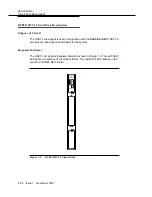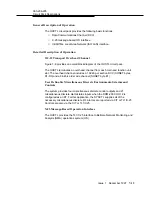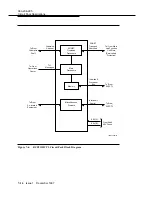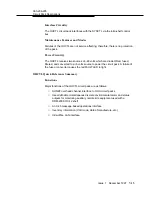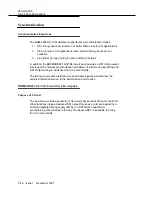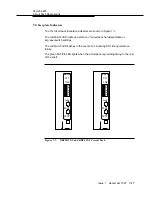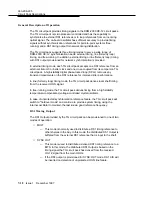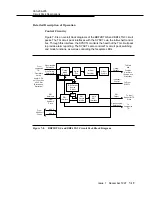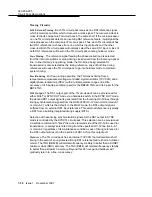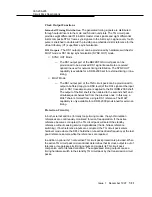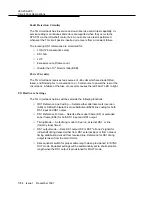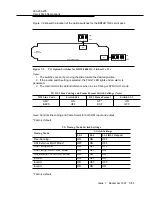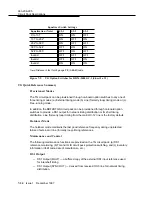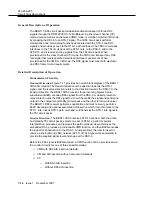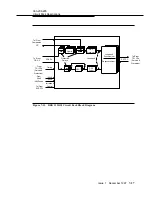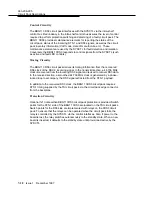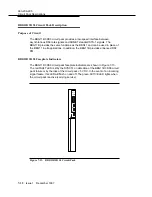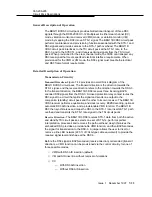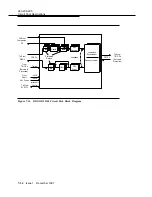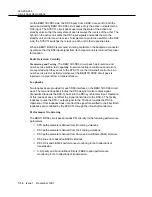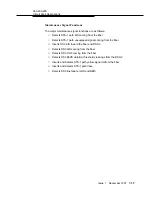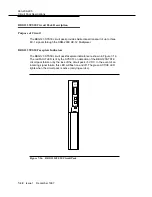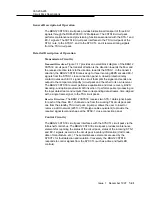
363-206-295
Circuit Pack Descriptions
7-26
Issue 1
December 1997
General Description of Operation
7
The BBG11 3DS3 circuit pack provides bidirectional transport of three DS3
signals through the DDM-2000 OC-12 Multiplexer in either clear channel (CC)
mode, violation monitor and removal (VMR) mode, or violation monitor (VM) mode
by mapping the DS3 into an STS-1 signal. The 3DS3 circuit pack performs
maintenance and provisioning functions associated with the STS-1 and DS3
signals and provides access to the STS-1 path overhead. The 3DS3 circuit pack
interfaces to the TSI circuit pack at the STS-1 rate, to the DSX-3, and to the
SYSCTL, and it receives timing signals from the TSI circuit pack. When
provisioned for the clear channel (CC) mode, the 3DS3 can transport any DS3
rate signal that meets specified electrical interface requirements. When
provisioned for the VMR or VM mode, the DS3 signal must meet both electrical
and DS3 frame format requirements.
Detailed Description of Operation
7
Transmission Circuitry
7
Transmit Direction.
7
Figure 7-11 provides an overall block diagram of the BBG11
3DS3 circuit pack. The transmit direction is the direction towards the STS-1
signal, and the receive direction refers to the direction towards the DSX-3. In the
transmit direction, the BBG11 3DS3 receives three incoming bipolar 3-zero
substitution (B3ZS) encoded DS3 signals from the DSX-3. A closed protection
relay contact routes the DS3 signal to a circuit that splits the signal and sends one
output to the companion (standby) circuit pack and the other to its own receiver.
The BBG11 3DS3 receiver performs equalization and clock recovery, performs
B3ZS decoding and optional automatic AIS insertion which it synchronizes to the
STS-1 rate; inserts STS-1 path overhead; and transmits the STS-1 rate signal to
the TSI circuit packs.
Receive Direction.
7
The BBG11 3DS3 receives STS-1 data from both the active
and standby TSI circuit packs, selects one set of STS-1s, performs pointer
interpretation, processes and removes the path overhead, desynchronizes the
embedded DS3, provides a provisionable VMR function, and then B3ZS-encodes
the signal for transmission to the DSX-3. A jumper allows the user to insert or
remove a line build-out (LBO) network (225 ft. of 734A type cable equivalent) to
provide the required signal level and shape at the DSX-3.
Before the DS3 signal is B3ZS-encoded, a VMR function can be provisioned via
the control circuitry for one of three possible modes:
■
VMR with DS3 AIS insertion (default)
■
VM and AIS insertion without removal of violations
■
CC
— With DS3 AIS insertion
— Without DS3 AIS insertion.

